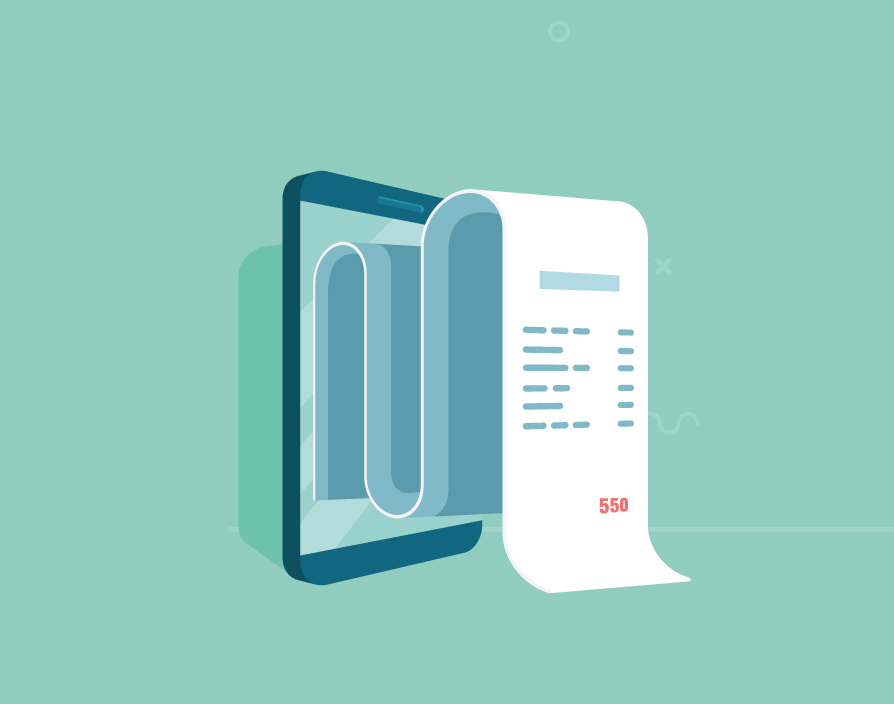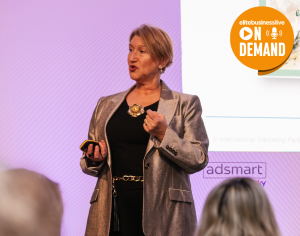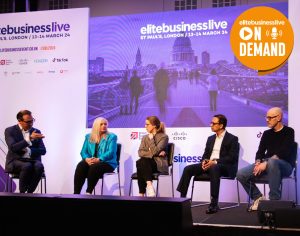If you’ve ever seen the number of receipts that pile up at automated tills in supermarkets or the veritable snowdrift of advice slips that litter the floor near cash machines, you’ll know that our current solution for how we issue proof of purchase is broken. Not only are paper receipts wasteful and easily lost but they have utterly failed to keep pace with innovations in the retail and payments space. “It’s insane that today you go from using 21st century contactless cards to receiving 100 BC paper receipts,” says Veronique Merriam Barbosa, co-founder and COO of Flux, the receipts and loyalty-card startup. “There is no way to have any record of what you’ve bought in the real world except for those tiny little pieces of paper.”
Having met as some of the earliest employees of Revolut, the digital bank and crytpocurrency exchange, in January 2017 Flux co-founders Tom Reay, Matty Cusden-Ross and Barbosa decided the time was right to change proof of purchase permanently. “We joined the Barclays Accelerator powered by Techstars programme as one of 600 companies chosen from around the continent,” says Barbosa. While the entrepreneurs began to make progress with developing their own app, they quickly realised that part of the reason so few of their predecessors had made headway is that they were approaching the issue of receipts from completely the wrong direction. And this sparked a fundamental pivot. “It dawned on us that we are on the cusp of open-banking regulation and banks are completely changing their attitudes as to how they’re going to work with third-party fintech,” Barbosa says. “We realised there was a huge opportunity on our doorsteps to actually directly integrate with the banks, rather than building a standalone app.”
Rather than convince consumers to entirely change the way they pay, Flux’s most intriguing innovation is how it uses the banks’ and retailers’ existing payment architecture to provide the public a pain-free product. “Flux exists inside of your banking app: all you need to do is enable it,” Barbosa says. “Once you’ve switched on Flux, that’s it: you just pay as normal.” Effectively creating a data exchange between retailers and banks, when customers pay with their usual bank card, Flux logs itemised transactions from point-of-sale (POS) systems and collates this as receipts within online- and mobile-banking apps. As well as seeing the value of their total transaction, consumers can see a full list of the things they’ve bought and have a formal proof of purchase – all without having to press a button. “Beyond knowing that you spent £10 at Starbucks, you’ll actually see that you bought a soy cappuccino and a blueberry muffin,” says Barbosa. “It’s a pretty awesome customer experience clicking a transaction that you’ve just made in your banking app and seeing exactly what your money was spent on.”
But the surprise and delight doesn’t end there. Once Flux’s co-founders had hit on the idea of building upon existing payment infrastructure, they quickly realised there was an opportunity to streamline and unlock value in a whole new vertical: loyalty vouchers.
With so many stores still using paper-based systems, it’s not hard to recognise many retailers current approach to loyalty schemes is woefully out of date. Research conducted by Quadstone in 2001 found that 19% of consumers claimed that they ‘usually forget’ to redeem points accrued in such schemes. “I know a full loyalty card is worth money but I always shove it in my pocket and forget,” says Barbosa. “And that’s a really frustrating customer experience.” While there are many startups and larger brands offering their own bespoke solutions, customers have to remember to check into umpteen different apps as they shop in various stores and remember to redeem the benefits when they’re due. Conversely, with Flux’s solution, all they have to do is pay on their cards as normal and, when they’ve accrued enough purchases, their perk will be redeemed automatically. “Imagine a world where you don’t have to search for a loyalty card and don’t even have to remember that you’re due a free item,” says Barbosa. “It’s completely seamless: you just get rewarded instantly with a cashback to your account.”
Having hit on these innovations, it wasn’t long before partners began to express a real interest in Flux. No sooner had the startup graduated from the Barclays Accelerator and launched the first iteration of its product in April 2017 than Monzo, the challenger bank, agreed to come on board as its first banking partner. But this wasn’t Flux’s most significant coup: with a bank already on board, it soon managed to convince Eat, the sandwich-shop chain, to add its service to its POS system. “It only took from April to June to convince them to roll it out across the country,” says Barbosa. “And that took them less than 48 hours.” And this served as a serious endorsement of the digital-receipts startup. “Our closest competitor took almost five years to get a large high-street name on board; it took us less than six months,” she says. “That rapid adoption says a lot.”
Flux is aiming to get many more brands to follow in Eat’s footsteps. “Where we would like to see Flux take off is in high-frequency food retail, including coffee chains,” says Barbosa. “But if you don’t have a significant number of customers, you can forget talking to retailers: they just don’t care.” As a result, Flux’s big focus recently has been on bringing its service to as many consumers’ banking apps as possible, which is already yielding significant results. Not only did it announce in November 2017 that it will be trialling its solution with 10,000 Barclays mobile-banking customers in Q1 this year but it also announced that it would be partnering with Barclaycard to help package its services to the brand’s retail customers. “Barclaycard provides merchant banking for at least 30% of the UK market, so some of its clients are large high-frequency UK retailers,” Barbosa says. “So we’re now working closely with the bank on both sides.”
And there’s a good reason why Flux is consciously developing relationships on both sides of the transaction: not only is this key to the way in which its solution works but its entire monetisation strategy is built upon the benefits it unlocks for both parties. For example, banks will happily pay because the increased paper trail created means that they bear less burden for disputed transactions. “If the customer does not have a proof of purchase – which the majority of people will not have for purchases under £20 – then most chargeback schemes are not liable for it,” says Barbosa. “A lot of the time that means the banks will compensate customers out of their own pocket to keep them happy.” Meanwhile, retailers will gladly pay to be able to avoid the hassle normally associated with operating loyalty schemes and issuing paper receipts. This means that, unlike many similar products, Flux isn’t incentivised to make its money from selling consumers’ data to the highest bidder. “The important thing about how we monetise is its not about collecting and selling your data,” Barbosa says.
This is a particular point of pride for Flux. With the new General Data Protection Regulation set to come into force on May 25 and increasing backlash from consumers about the careless manner in which some companies are handling their data, the startup knows that a responsible approach to how it handles data is pivotal in ensuring the public is happy to trust it with something as private as its purchasing habits. “We’re not some silent third party on your bank account, sucking up all your data without your awareness,” Barbosa says. “We are very much a transparent business; we’re very explicit about how data is used and go above and beyond the new legal requirements.” This means that not only do customers have to explicitly opt-in to using its services but the access retailers have to their information is very limited: the only data available is for retailers to use for promotions is aggregated and anonymised. “They can only do it in the same style that they could on Facebook,” says Barbosa. “You can only target groups, like ‘people who buy avocados’ for example.”
This mindful approach to data coupled with its efforts to declutter consumers’ pockets definitely seems to be proving a hit with retailers, banks and the public alike. But Flux is only just getting started. “Those tens of thousands of customers at Barclays are a huge success but for us it’s just the beginning,” says Barbosa. Flux isn’t just aiming to build on its relationship with Barclays and Eat by securing full roll outs with the big four banks and more high-frequency food retail brands: long-term Barbosa can envision consumers being able to plug their transaction data direct into other products, such as expense or personal finance apps. “I really believe that we have the opportunity to build the first Google in this space,” she says. “They built the best search in the world and they built exciting products around that. Essentially I believe we’re in the phase of building our search.” ![]()
Share via:








































